How the Queen came to be a fashion symbol

The Queen’s outfits are built on monochromatic coordinated pieces and matching hats, with accessories ranging from gloves, brooches, and her famous boxy handbags to silk scarves, pearls, and Fulton umbrellas. Robin Janvrin, her former Private Secretary, tells BBC Culture, “I have always been struck by the Queen’s very practical approach to what she wears. She dresses to stand out so that people can see her – bright colours and a hat, with gloves useful when being handed all sorts of things on walkabouts.”
The monarch also has a soft spot for sartorial surprises, as evidenced by her enthusiasm for zingy designs and her love of color. “I think the Queen has very much approached her clothing as a uniform, but she keeps it creative and interesting within those guidelines,” BBC Culture quotes Elizabeth Holmes, the author of HRH: So Many Thoughts on Royal Style. Her fashion sense is likewise impeccable; it pays subtle tribute to both domestic and foreign nations, cultures, individuals, and events. In honor of her Platinum Jubilee, we examine how the monarch’s distinctive aesthetic came to be, as well as the various ways that she has used clothing as a strong and fun instrument throughout the years.
1950s
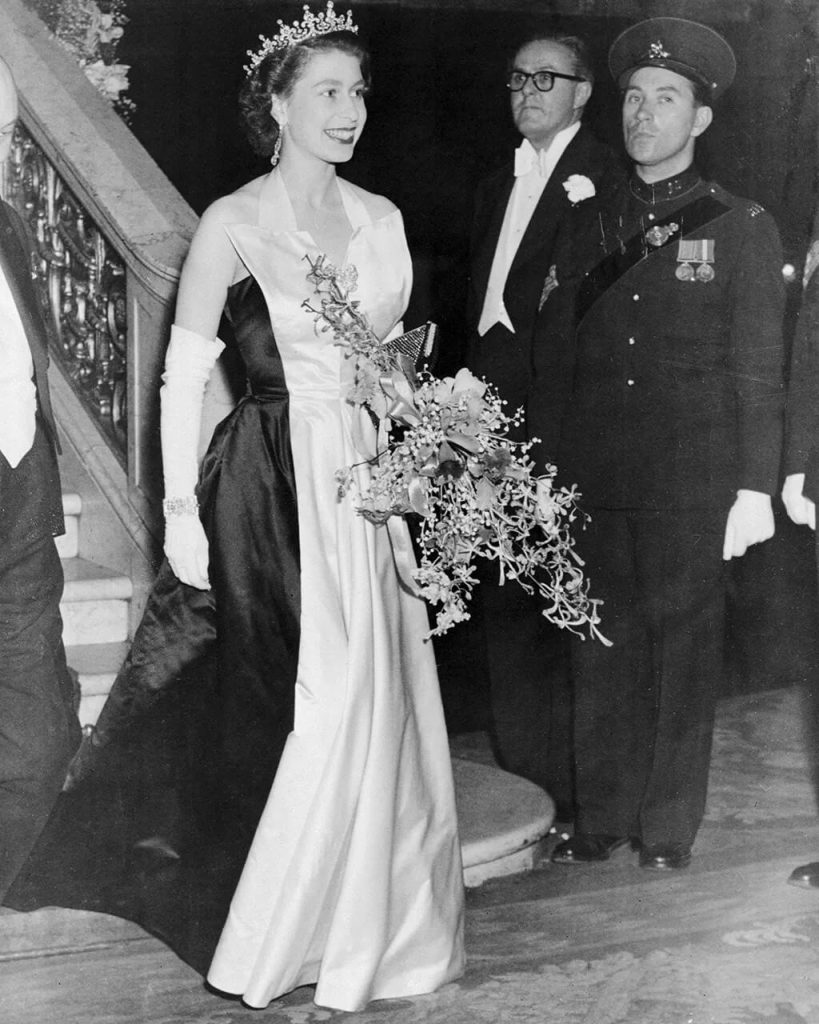
The Queen’s most trend-focused decade was the 1950s. With assistance from her primary designers Norman Hartnell and Hardy Amies, Elizabeth embraced the splendor of the post-war era as a 25-year-old newly crowned monarch, promoting British fashion and achieving her own position as a style hero along the way. “She took to the global stage at a time when the world was largely run by men, and to see her hold on to her razzle-dazzle femininity was just delightful,” says Holmes.
Elizabeth II made a big splash when she showed up to a special movie screening at Leicester Square’s Empire Theatre wearing this dramatic black-and-white Norman Hartnell gown, complete with long white gloves and a tiny tiara. “At first glance, it’s a beautiful, very traditional ball gown, which is what you’d expect at a big gala performance,” Bethan Holt, author of newly published book The Queen: 70 Years of Majestic Style, tells BBC Culture. “But then you notice its menswear detailing – a tuxedo-lapel finish at the top. Hartnell and the Queen are showing they’re not afraid to make a fashion statement.” The next day the so-called “Magpie dress” was headline news, spawning multiple copies and DIY patterns.
1960s
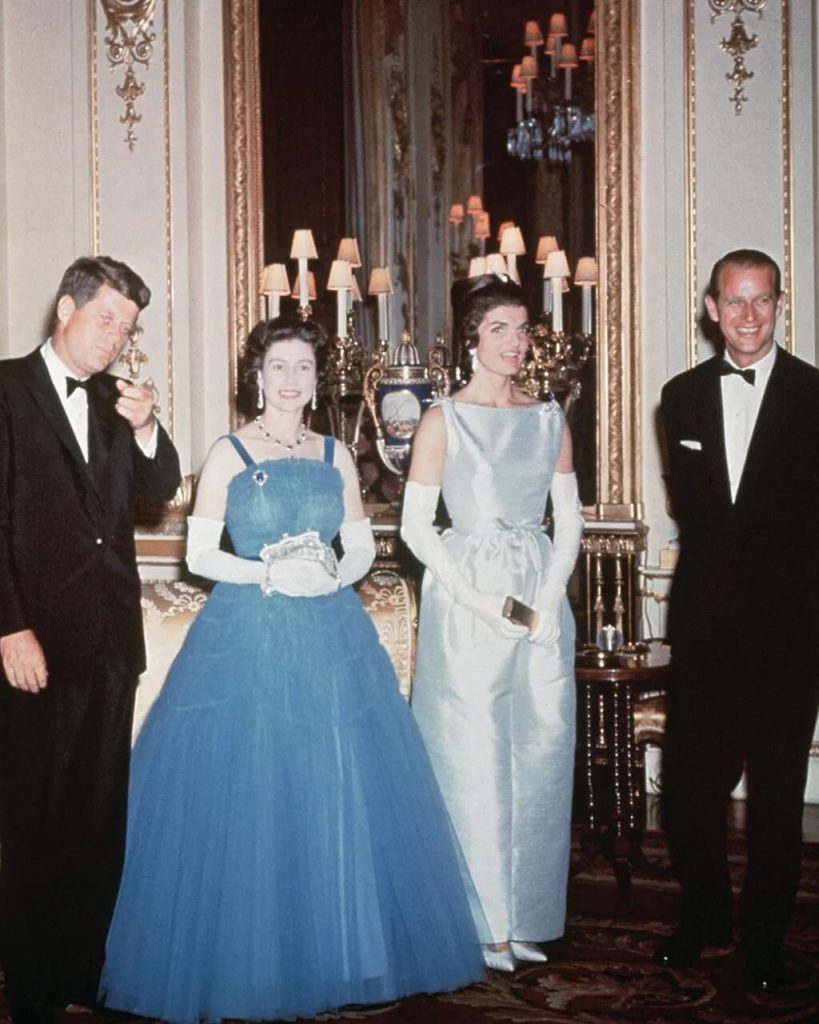
The Queen kept up her love of glitz in the early 1960s. HM wore a light blue evening gown with ruffled tulle—a Hartnell trademark—when she hosted the Kennedys at Buckingham Palace in 1961, while the First Lady chose a sleek column dress that was much more in style. The event was dramatized in the television series The Crown, which capitalized on rumors that Jackie had been unimpressed with the Queen’s “traditional” attire. Holmes contends that both women’s clothing communicated to who they were and what they stood for, and that the Queen placed unshakeable importance on this, particularly during momentous occasions. “She can never go wrong if she sticks to what she knows and that classic silhouette is very familiar to her,” says Holt.
The monarch did in fact reconsider her role as a trend-setter as the renown for being free-spirited decade advanced, bringing with it miniskirts, bell-bottoms, tie-dye, and other items, and instead set out to lay the groundwork for her now-iconic style. The time of solid colors, sleek silhouettes, and skirts that stayed consistently at or below the knee had arrived.
1970s
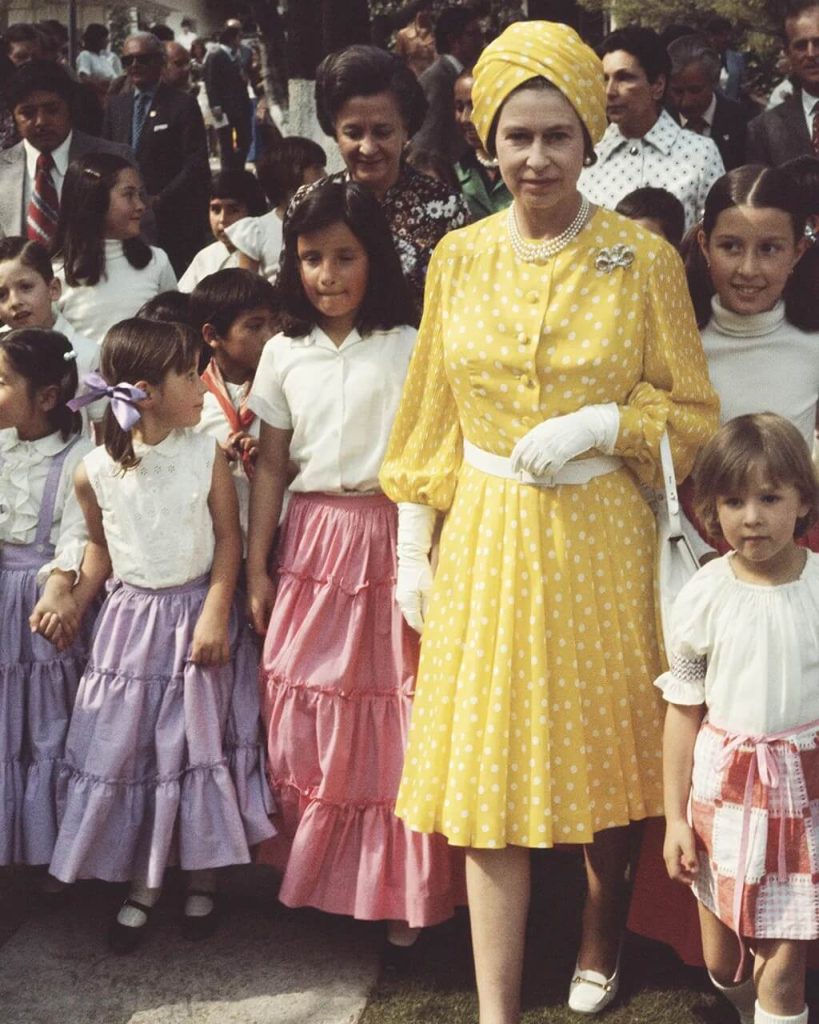
The Queen has been to 117 different nations during her reign, making her the most traveled monarch in history. For each of her royal visits, a meticulously designed, tailored ensemble that reflects “the attitudes, or flora and fauna, of the country she’s in, whether through colour, style, pattern, or jewellery,” Lucinda Hawksley, the author of Elizabeth Revealed, tells BBC Culture. “It’s one of the things that makes her such a great diplomat.” Holmes agrees: “Her gracious gestures say everything without having to say anything at all, and have influenced the way a lot of female politicians dress today.”
During a state visit to Mexico in 1975, the Queen is pictured wearing a bright yellow polka-dot dress by Hardy Amies and a matching headdress by Frederick Fox. Yellow has long been associated with rebirth and hope, and in Mayan tradition, color represents maize, a crucial source of life. The Queen’s stunning self-expression, which was seen in her eye-catching day and evening clothing throughout the decade, is evident in the strong choice of color and pattern. In the meantime, quirky headgear was evolving into a crucial royal staple. “The Queen reached a moment in middle-age when she hit her stride with her role,” notes Holmes. “She recognised the need to keep her presence interesting, and interesting hats make for fantastic photographs, particularly in close-ups.”
1980s
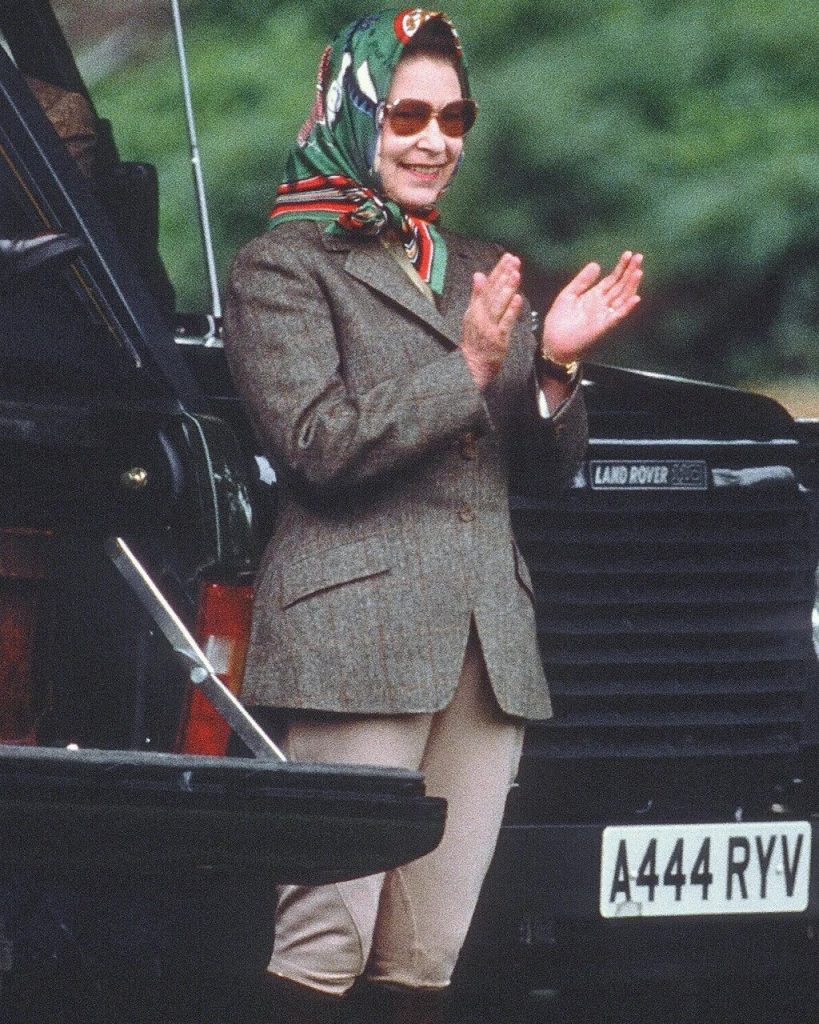
This photograph of the Queen was taken at The Royal Windsor Horse Show in 1988. She is wearing her steadfast and classic off-duty attire—no puffy sleeves for this picture. This is defined by “the tweed skirts and jackets, the jodhpurs, these classic British country items she has made her own,” explains Holt, “and that show her as a woman who loves horses and the outdoors.” Such outfits will often be topped by a Barbour jacket and an exuberantly patterned silk headscarf, frequently an equine print by Hermes, that Holmes says “shows her personality and somehow makes her more approachable”.
The rustic chic aesthetic popularized by the monarch has been so often imitated throughout the years that it now has a kitsch appeal. This was arguably best exemplified by Gucci’s spring/summer 2017 women’s fashion show, which was held in Westminster Abbey and included models dressed in garish headpieces, vibrant tartan skirts, box handbags, and decorated loafers in homage to HM’s casual attire. Numerous wealthy outdoor enthusiasts have long embraced this fashion elsewhere, albeit in a more subdued way. “I think it gives the Queen anonymity because so many others dress like her, with the headscarf and so on, so she just looks like any older woman at a horse show,” says Hawksley.
1990s
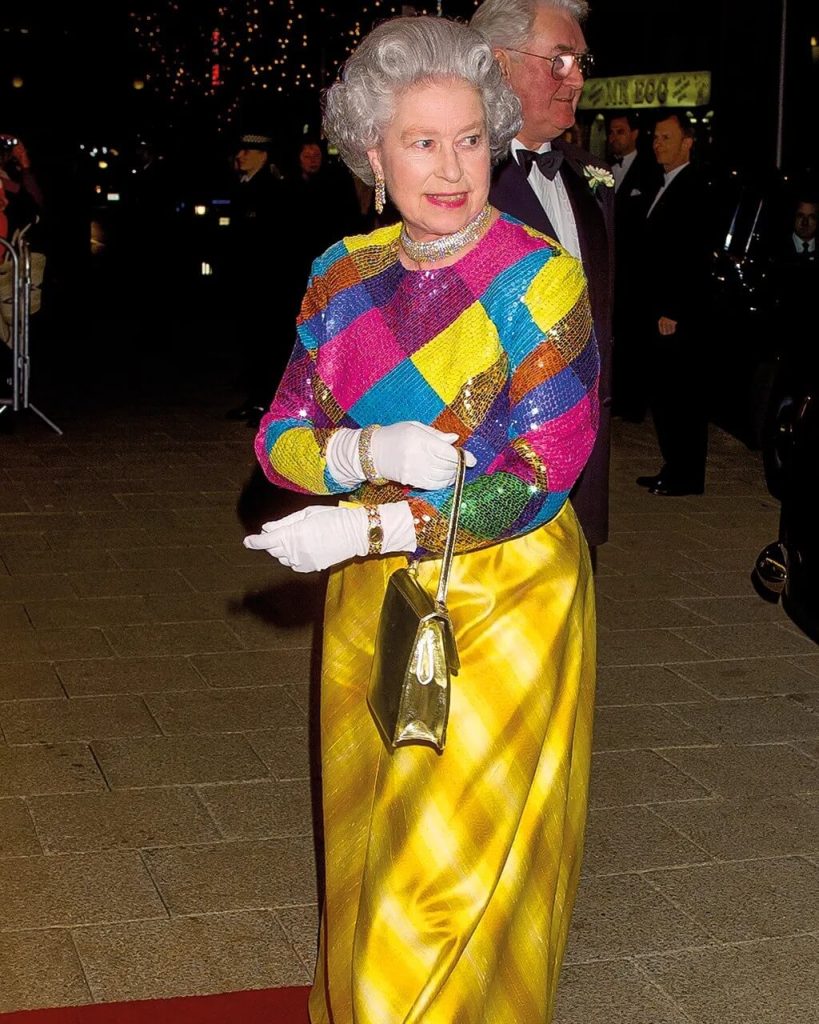
The Queen dubbed 1992 a “annus horribilis” because to royal marriage failures and a tragic fire at Windsor Castle, which gave the 1990s a poor start for the Windsor family. The highly public dissolution of Prince Charles and Diana’s marriage and Diana’s passing in 1997 only made matters worse. The Queen, whatever unsettling the times, can be counted on to show up and carry out her duties while occasionally tossing in a fashion curveball for good measure.
One of her most daring evening outfits ever, this one was worn in 1999 to the Royal Variety Performance in Birmingham. The “Harlequin dress,” created by Karl-Ludwig Rehse, features a sequined bodice covered in multicolored diamonds on top of a gold, V-striped skirt. “This is a great example of the Queen going all-out for an event,” says Holt. “When royals dress up in this way, it shows how much they respect the occasion they’re going to. They realise their attendance is the crux of the evening.” It also shows how open the Queen is to experiment, albeit very wildly in this case.
2000s
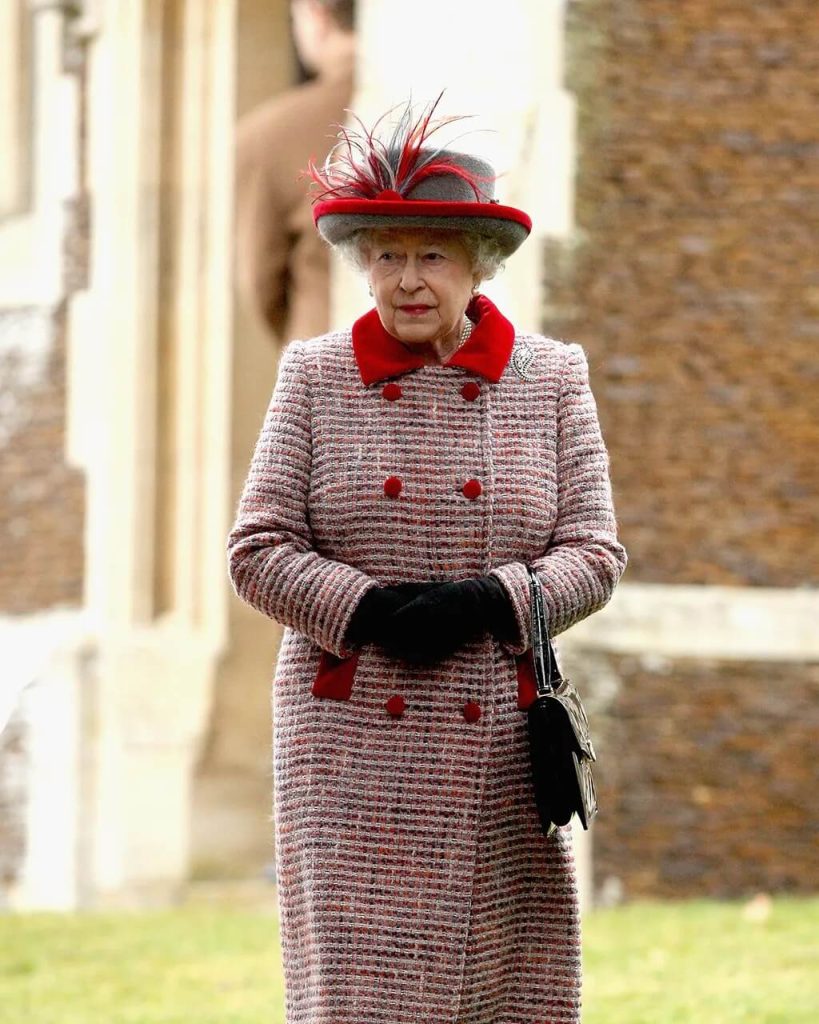
The Queen, who is never afraid to make a festive statement, wore this holly-berry-red-edged tweed coat and matching hat to the church service on Christmas Day at Sandringham in 2008. It is a look representative of the Queen’s distinctive aesthetic, which her personal stylist Angela Kelly, who assumed the position in 2002, has tailored for her latter years. It also shows her persistent devotion to her favorite British accessory designers. She has worn the same style of buckled block-heeled shoe, made by Anello & Davide rather than Gucci, and Launer handbags throughout her reign.
Of course, this is about more than just personal preference. “What’s been very clever about how the Queen has used fashion since the late 50s is that it has come to represent the Royal Family as an anchor in a crazy, ever-changing world,” says Holt.
2010s
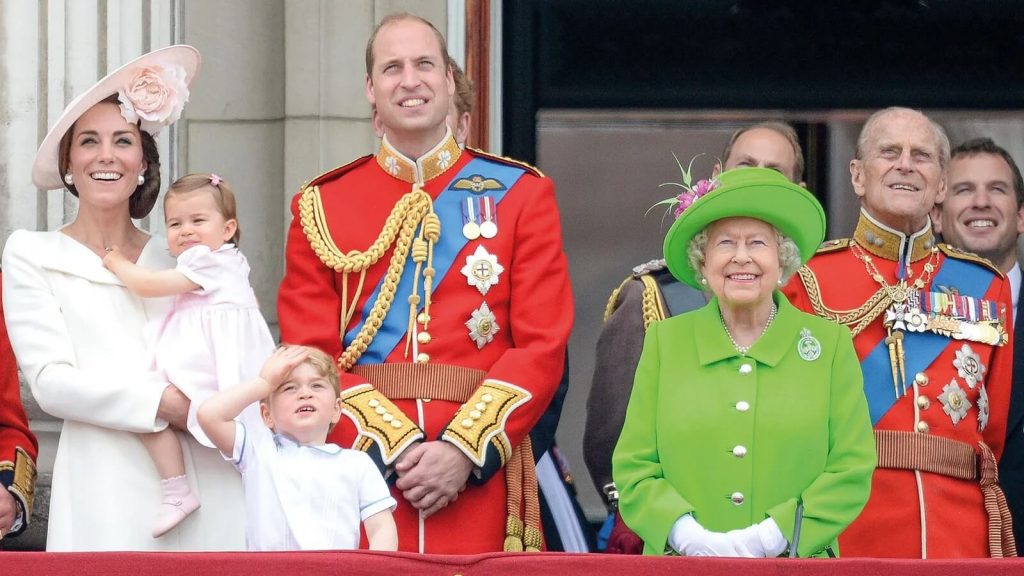
With a neon-green two-piece made of wool crepe and silk by royal favorite Stewart Parvin and a matching hat by Rachel Trevor-Morgan, the Queen celebrated the beginning of her nonagenarian years. Trevor-Morgan has once again established herself as the reigning queen of color blocking, with no shade of the rainbow’s spectrum appearing off limits.
2020s
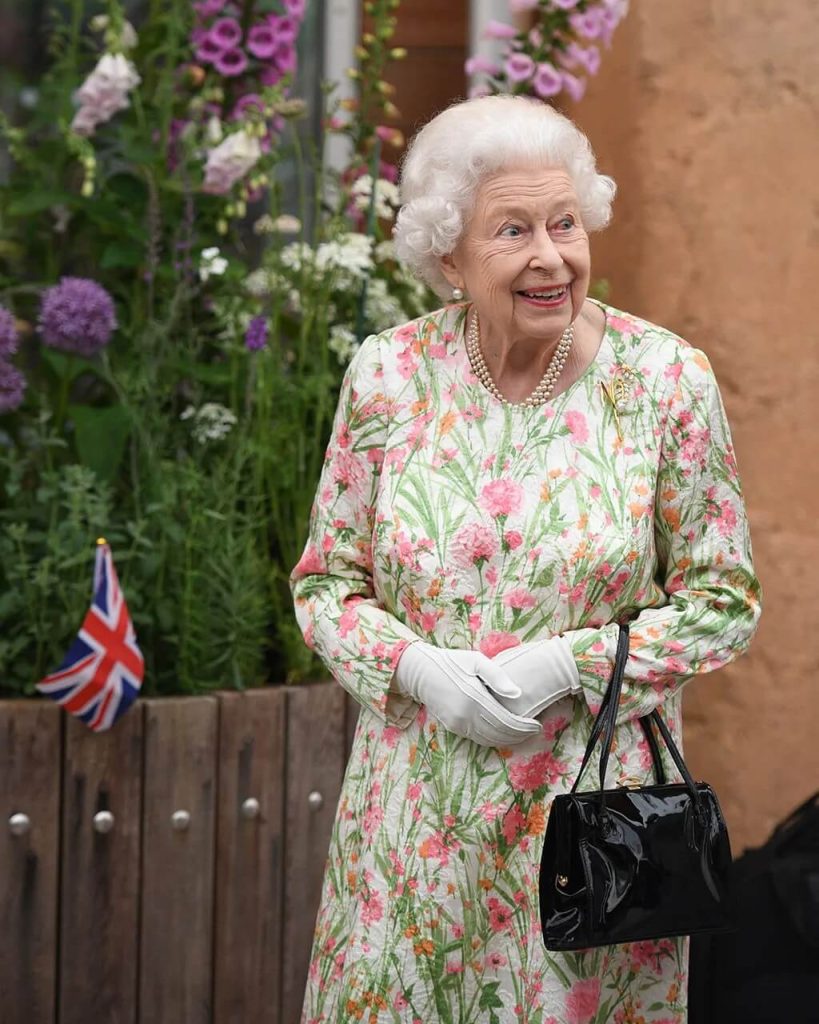
Her Majesty continues to dress positively in the 2020s. She paid homage to nature in her choice of a delicate floral-print dress by Angela Kelly worn to a charity event during the G7 summit that was held at The Eden Project, Cornwall’s lovely “global garden,” and accessorized with the Botswana Sorghum Brooch that the President of Botswana gave her in 2007.
“The Queen is not someone who can come out and give her opinion in big speeches, and nor would she like to, but she always uses clothes and jewellery to send a little message,” notes Holt. “I think in the era of social media everyone’s become quite excited about it,” she adds, referencing the EU-flag-evoking hat the monarch wore to parliament in 2017 in a move that sparked speculation of her possible status as a “remainer”. Such details “underline her feelings in a non-controversial way,” Holt continues. And indeed, as Holmes notes shrewdly, “From being a 25-year-old woman to now, the Queen has never once been deemed inappropriate in what she’s wearing. She makes it look easier than it really is but the amount of work, thought, effort and resources it takes to never miss in 70 years is incredible.”





Leave a Reply
You must be logged in to post a comment.